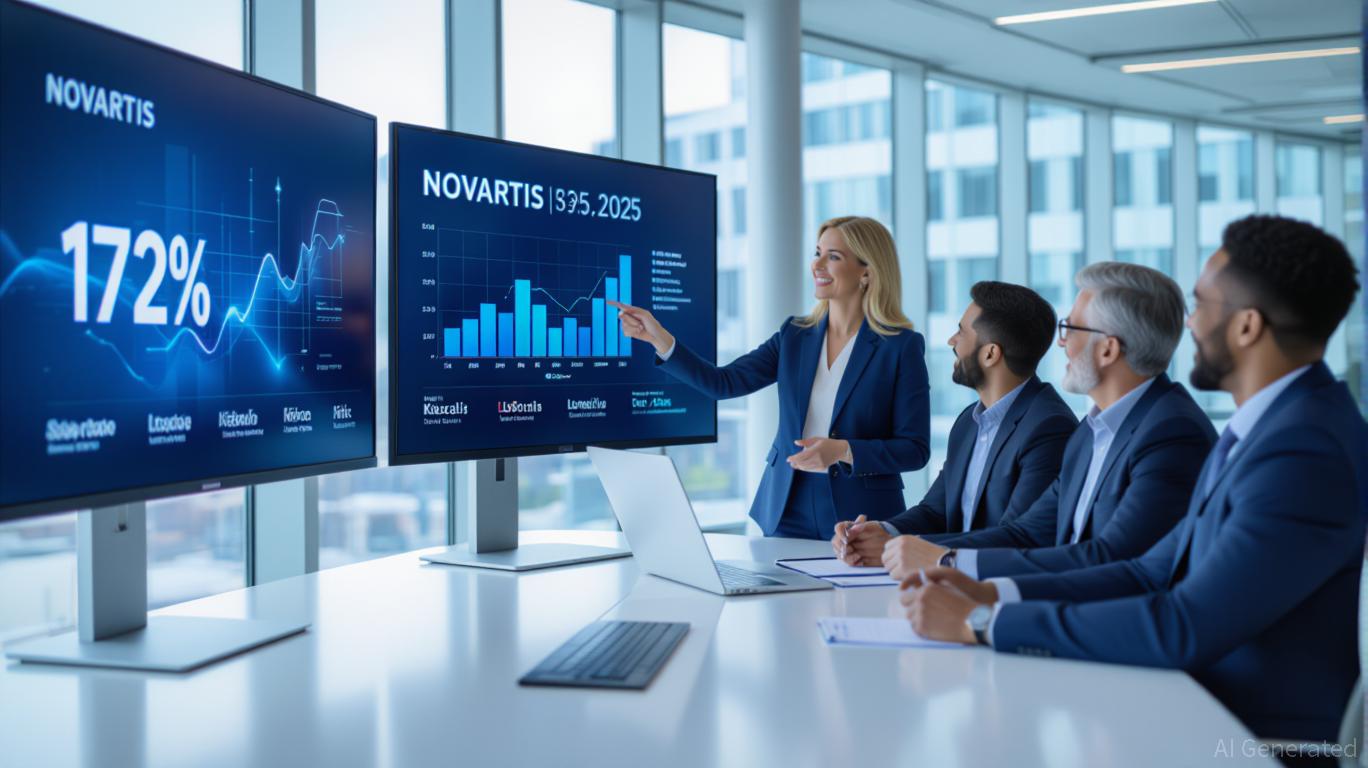Novartis' Q2 Outperformance and Revised Guidance: A Catalyst for Re-rating?

The pharmaceutical sector has long been a barometer for global economic resilience, but Novartis' Q2 2025 results have redefined expectations. With net sales of USD 14.1 billion, a 12% year-over-year increase, and a core operating income margin of 42.2%—up 340 basis points—Novartis has demonstrated a rare trifecta of top-line and bottom-line growth. Coupled with a USD 10 billion share buyback program and a revised full-year guidance, the company is signaling confidence in its long-term trajectory. But is this momentum sufficient to justify a re-rating of its valuation?
Earnings Upside: A Structural Shift in Growth Drivers
Novartis' double-digit sales growth in Q2 was not a one-off but a reflection of strategic alignment with high-growth therapeutic areas. Priority brands such as Kisqali (+64% constant currency), Leqvio (+61%), and Scemblix (+79%) are outpacing industry benchmarks, driven by unmet needs in oncology and cardiovascular-renal-metabolic (CRDM) diseases. These products are not just incremental additions but structural wins, with Kisqali's dominance in HR+/HER2- breast cancer and Leqvio's lipid-lowering efficacy creating durable revenue streams.
The sustainability of these drivers hinges on Novartis' ability to maintain innovation velocity. For instance, the recent Phase III readout for Pluvicto in hormone-sensitive prostate cancer and the accelerated FDA approval of Vanrafia for IgA nephropathy underscore a pipeline that is both diversified and high-impact. Unlike peers reliant on patent cliffs or generic erosion, Novartis' focus on radioligand therapy, xRNA, and gene therapy positions it to capture next-generation demand.
Innovation Momentum: A Hedge Against Sector Volatility
The pharmaceutical industry is notoriously cyclical, but Novartis' R&D strategy is designed to insulate it from macroeconomic shocks. Spending USD 10 billion in 2024 on R&D—despite a post-Sandoz spin-off leaner structure—highlights its commitment to innovation. This spending is not just volume-driven; it is precision-targeted. For example, Votoplam in Huntington's disease and OAV101 IT for spinal muscular atrophy (SMA) are not incremental improvements but potential curative therapies, addressing niche markets with high willingness to pay.
Critics may argue that therapeutic diversification dilutes focus, but Novartis' portfolio across oncology (29% of revenue), immunology (26%), and CRDM (13%) creates a natural hedge. While oncology remains its largest segment, the company's foray into neuroscience—a sector historically plagued by high failure rates—demonstrates risk management through innovation. The PIVOT-HD trial results for Votoplam, showing cognitive stabilization in early-stage Huntington's disease, are a testament to this approach.
Strategic Capital Allocation: Buybacks as a Re-rating Catalyst
The USD 10 billion buyback program, set to conclude by 2027, is more than a shareholder appeasement—it is a strategic lever to align capital with long-term value creation. With free cash flow up 37% year-over-year to USD 6.3 billion in Q2,
has the liquidity to execute this plan without compromising R&D or M&A flexibility. The buyback also sends a psychological signal: management's belief that the stock is undervalued at current levels.At a P/E ratio of 18.1x (below the peer average of 20.7x) and an EV/EBITDA of 11.7x (compared to Roche's 9.3x and AstraZeneca's 130.7x), Novartis appears mispriced relative to its fundamentals. The PEG ratio of 2.5x suggests a disconnect between growth and valuation, but this may be a temporary dislocation. As the market re-evaluates the durability of Novartis' innovation pipeline and the scalability of its priority brands, a re-rating could unfold.
Valuation and Long-Term Prospects: Is the Market Behind the Curve?
The key question is whether the current valuation reflects Novartis' long-term potential. At a 10-year P/E average of 19.98, the stock is trading 8% below its historical mean—a discount that seems unjustified given the company's margin expansion, cash flow generation, and pipeline depth. Analysts estimate a fair value of CHF 97.18, a 2.1% premium to the current price, but this may understate the upside from the buyback and full-year guidance hike.
Moreover, Novartis' geographic diversification—74% of revenue from established markets and 26% from emerging economies—provides a buffer against regulatory or macroeconomic shocks. Its focus on the U.S., China, Germany, and Japan, where it has strong market share, ensures that growth is not siloed to a single region.
Conclusion: A Case for Re-rating
Novartis' Q2 performance and strategic moves—from innovation in high-burden diseases to disciplined capital allocation—position it as a compelling long-term investment. The company's ability to balance top-line growth with margin expansion, while investing in future therapies, suggests that the market may be underestimating its resilience. The USD 10 billion buyback is a catalyst, but the deeper story is one of structural transformation: a post-Sandoz Novartis that is leaner, more innovative, and better positioned to capitalize on global healthcare trends.
For investors, the current valuation offers an asymmetric opportunity. If the company continues to meet or exceed its guidance—particularly in oncology and CRDM—the re-rating is not just plausible but probable. The question is not whether Novartis can deliver, but whether the market will recognize its potential in time.
Sign up for free to continue reading
By continuing, I agree to the
Market Data Terms of Service and Privacy Statement

Comments
No comments yet